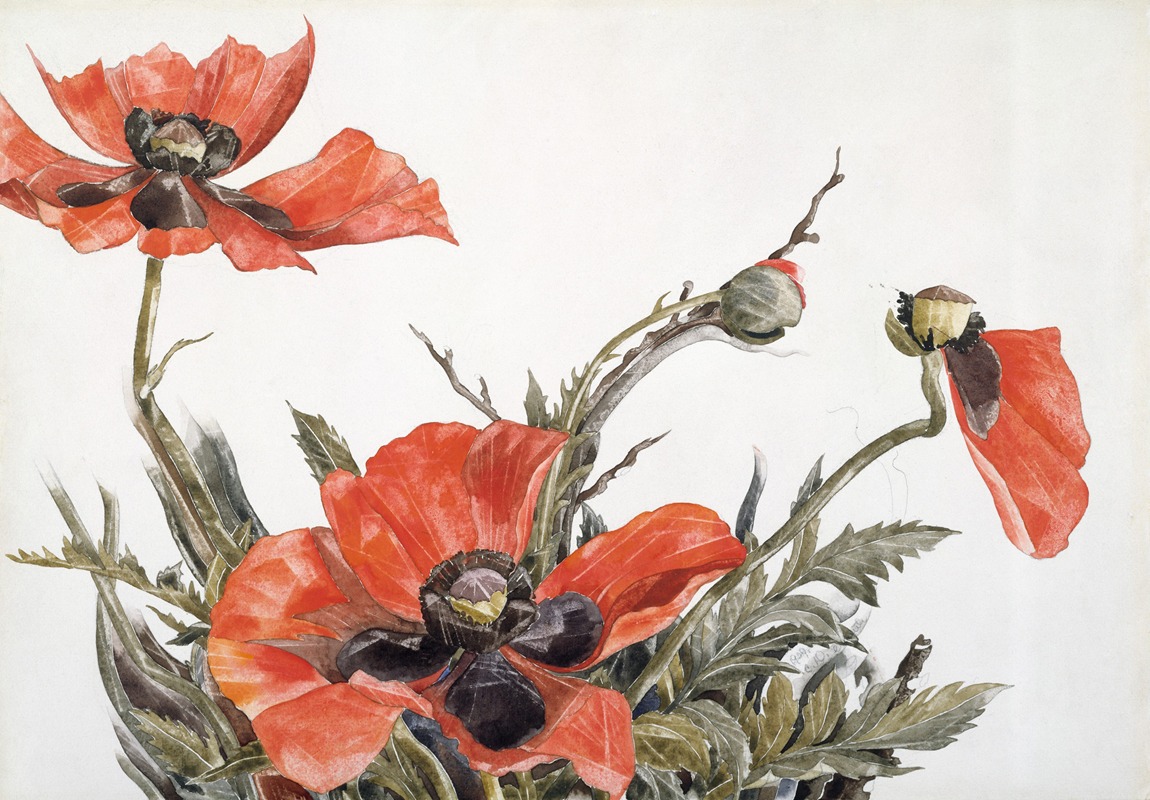
Red Poppies
A hand-painted replica of Charles Demuth’s masterpiece Red Poppies, meticulously crafted by professional artists to capture the true essence of the original. Each piece is created with museum-quality canvas and rare mineral pigments, carefully painted by experienced artists with delicate brushstrokes and rich, layered colors to perfectly recreate the texture of the original artwork. Unlike machine-printed reproductions, this hand-painted version brings the painting to life, infused with the artist’s emotions and skill in every stroke. Whether for personal collection or home decoration, it instantly elevates the artistic atmosphere of any space.
Charles Demuth's "Red Poppies" is a notable work by the American artist, who is recognized for his contributions to the Precisionist movement. Painted in 1929, "Red Poppies" exemplifies Demuth's ability to blend elements of realism with modernist abstraction, a hallmark of his artistic style. The painting is celebrated for its vibrant depiction of poppies, showcasing Demuth's skill in capturing the essence and beauty of natural forms through a modernist lens.
Demuth was born in 1883 in Lancaster, Pennsylvania, and he spent much of his life in his hometown, which often influenced his work. He studied at the Pennsylvania Academy of the Fine Arts and later at the Académie Colarossi in Paris, where he was exposed to avant-garde movements that would shape his artistic development. Although he is best known for his Precisionist works, Demuth's oeuvre includes watercolors, oils, and illustrations, reflecting a diverse range of influences and techniques.
"Red Poppies" is a watercolor painting, a medium in which Demuth excelled. The painting features a close-up view of poppy flowers, rendered with a striking use of color and form. The composition is characterized by its bold, flat areas of red and green, which create a sense of depth and movement. Demuth's use of watercolor allows for a delicate interplay of transparency and opacity, highlighting the intricate details of the flowers while maintaining a sense of abstraction.
The painting reflects Demuth's interest in the Precisionist movement, which emerged in the United States in the 1920s. Precisionism is characterized by its focus on clarity of form, sharp lines, and smooth surfaces, often depicting industrial and architectural subjects. However, Demuth applied these principles to natural subjects as well, as seen in "Red Poppies." His ability to distill the essence of his subjects into simplified geometric forms is evident in this work, where the poppies are both realistic and abstract.
"Red Poppies" is part of a series of floral watercolors that Demuth created during his career. These works are noted for their vibrant colors and meticulous attention to detail, showcasing his mastery of the watercolor medium. The painting is housed in the collection of the Whitney Museum of American Art in New York City, which holds a significant number of Demuth's works.
Demuth's health was fragile throughout his life, and he battled diabetes, which eventually led to his death in 1935. Despite his relatively short life, Demuth left a lasting impact on American art, particularly through his contributions to the Precisionist movement. His work continues to be celebrated for its innovative approach to form and composition, as well as its ability to capture the beauty of both natural and man-made environments.
"Red Poppies" remains an important example of Demuth's artistic legacy, illustrating his unique ability to blend realism with abstraction and his commitment to exploring the possibilities of modernist art. The painting continues to be studied and admired for its technical skill and aesthetic appeal, securing Demuth's place as a significant figure in the history of American art.


















